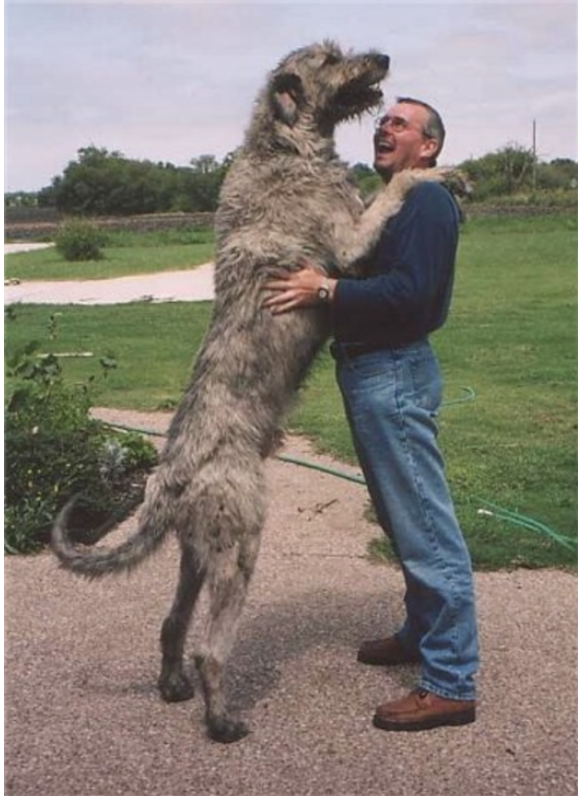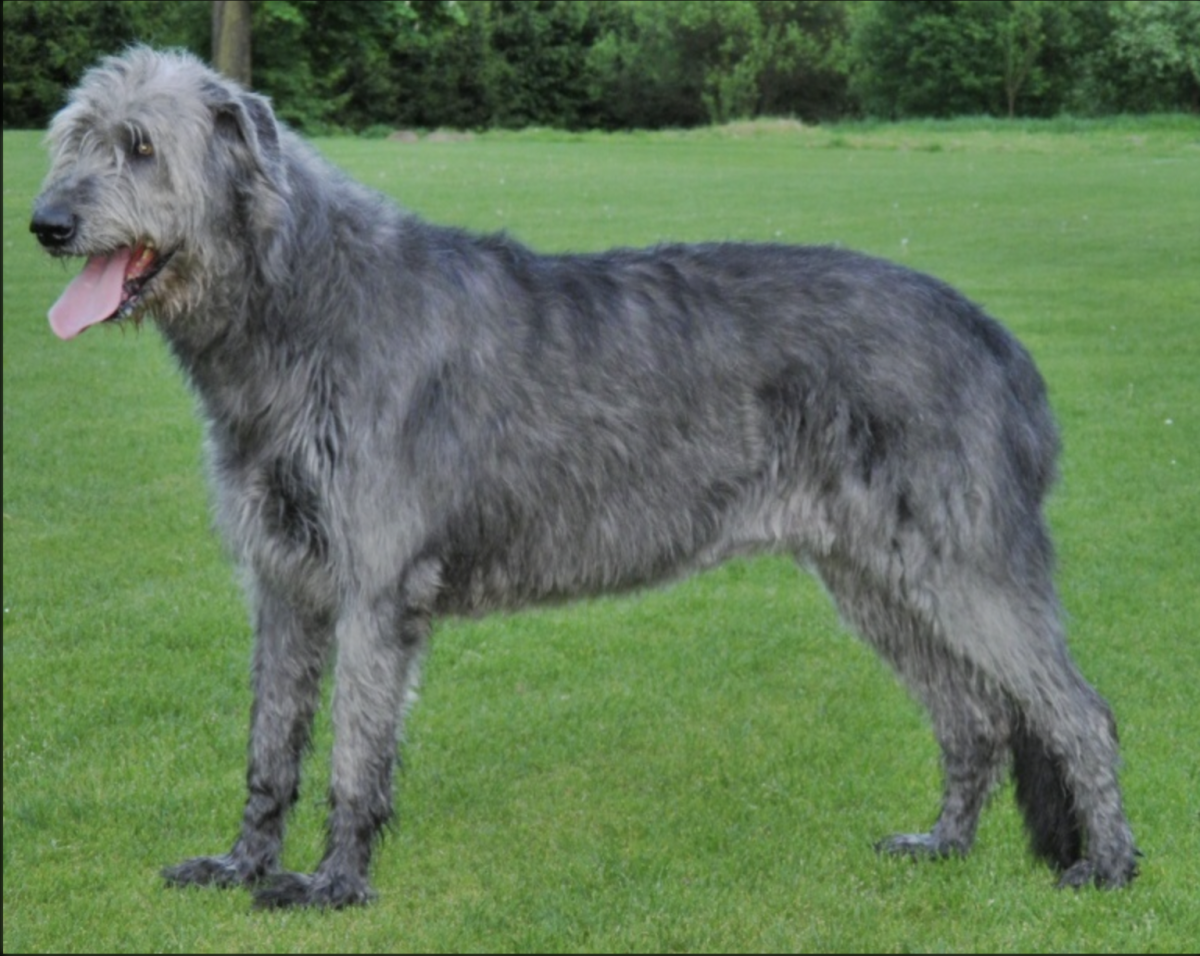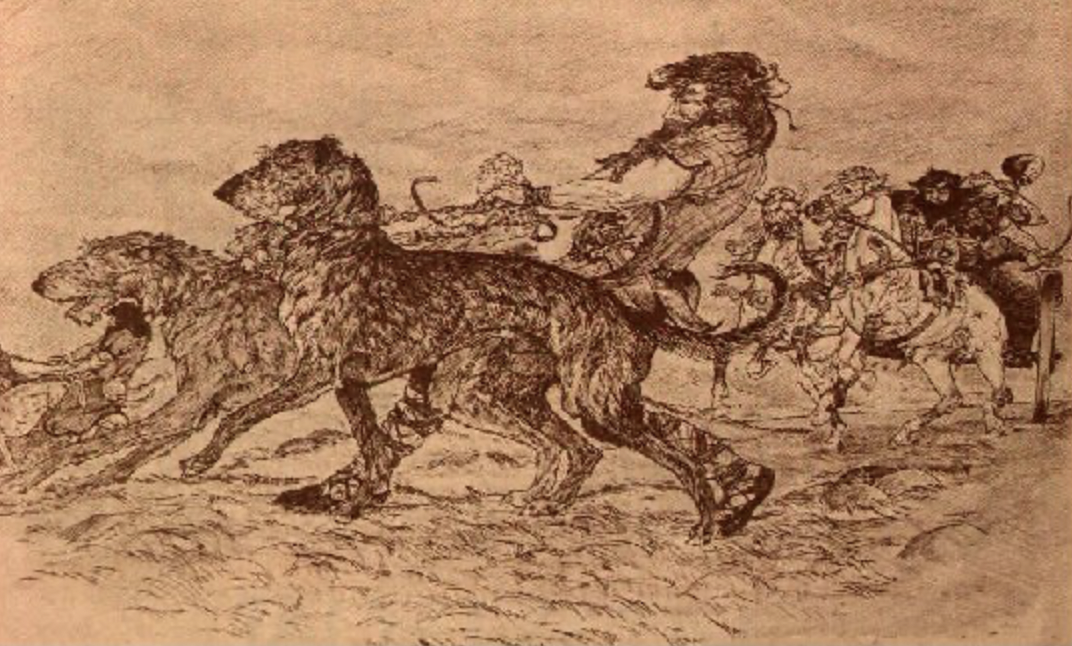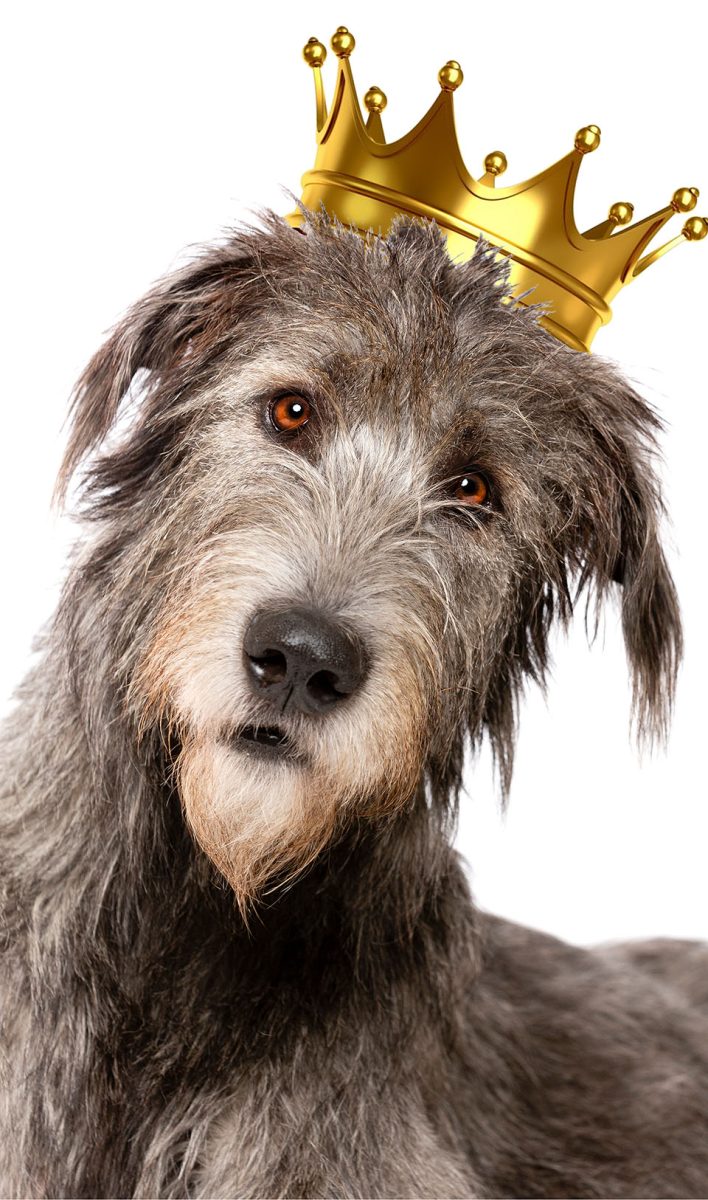The Irish Wolfhound- Get to know the Legendary Gentle Giant
The Irish wolfhound is a giant breed of dog originating in Ireland, and they are also known as the Irish Greyhounds.
They have been used for hunting since ancient times, but their most famous use was during World War II when they served on both sides of the conflict.
Despite their immense size and appearance, Irish wolfhounds have a reputation for being calm and gentle- although they will need the right kind of training as pups to achieve this. They don’t have the personality to be a fierce guard dog, but their appearance alone may be enough to deter intruders. Known for being well behaved with children, the Irish wolfhound can make a lovely family pet, but as with any kind of dog they should never be left unsupervised with young children.
So let’s find out more about the biggest of the big, with a history of hunting, but don’t let their awesome size fool you; the Irish wolfhounds are gentle souls who love to get along with everyone and are especially good with children, and a friend to other dogs.
How tall is an Irish Wolfhound?
The Irish wolfhound is a large dog, with an average height of 30-35 inches, and an average weight of 105-180 pounds. An adult male Irish wolfhound standing upright on its back legs could reach an incredible 7 foot tall! They are the tallest breed of dog in the world.


Recognising an Irish Wolfhound
Their heads are long in proportion to their body, which gives them a “long face” appearance. Their muzzles are short and broad, giving them a foxlike expression. They have dark eyes that are set wide apart on either side of the skull, and black noses.
Their rough, hard coats comes in many colours, including white, grey, brindle, red, black, and fawn. They appear graceful yet muscular with a shaggy, harsh topcoat and an undercoat too. It is typical for them to have long hair that falls over the eyes and a beard.
The Irish wolfhound, although the tallest dog breed, is certainly not the heaviest. Its build and composition is often compared to that of a greyhound, with a deep chest which curves upwards to a slim waist.
You can read in more detail about the specifics of the breed standard HERE.
History of the Irish Wolfhound
The Irish wolfhound is one of the oldest breeds in existence. It was developed by monks who needed an animal that could hunt down and kill wolves, which were considered dangerous pests at the time. The breed has been around for over 1,000 years! Today, it’s still used as a hunting dog but also enjoys being part of family life. This large hound can be found all across Europe and Asia.
In ancient times, the Irish wolfhound was known as “the Hound of Ulster” or “Ulster’s Hound”. It was said to be bred on the island of Inishowen in County Donegal, where there are still some hounds today. There were two types of Irish Wolfhounds – one with long legs and another with short ones. They were both grey dogs, although they had different coats.
Like many other dogs of this kind of stature, these sighthounds were only really owned by the high born. Over the centuries, they became coveted gifts to emperors and ambassadors, kings and cardinals, often arriving in ancient times in symbolic groups of seven, tied with silver chains. There are many folk tales from Ireland describing Irish wolfhounds in ancient times, including:
- One of the earliest written records of these dogs comes from the Annals of Ulster which states “the hound of Cairbre mac Néill ”. The name Cairbre means “dog” or “wolf”, while MacNéill refers to his father, king Niall. This particular dog had been given by King Niall to St. Columba on one of his journeys through Scotland.
- In 391 AD, the Roman statesman Quintus Aurelius Symmachus wrote a letter of thanks to his brother for the gift of seven Irish hounds, noting that “all Rome viewed them in wonder”.
- Then there was the story of the Irish wolfhound Ailbé, who’s strength was so famous that two kings vied to own him, one offering “three score hundred milch cows at once and a chariot with two horses and as much again at the end of the year.” When the bidding war turned nasty it turned into an actual physical war and the dog Ailbé was beheaded for attacking one of the king’s chariots and seizing its axle. Even when his head was separated from his body, it is said that he remained clamped tightly to the axle.
- In 1738, German naturalist Johann Elisabeth von Riedesel wrote about his visit to Ireland where he saw “large greyhounds”. He described them as having long legs with large feet, short ears, thick hair on their backs, tails curled over their backside, and pointed muzzles. They were said to be very strong dogs which could run at full gallop without tiring.

Like many other dogs of this kind of stature, these sighthounds were only really owned by the high born. Over the centuries, they became coveted gifts to emperors and ambassadors, kings and cardinals, often arriving in ancient times in symbolic groups of seven, tied with silver chains. There are many folk tales from Ireland describing Irish wolfhounds in ancient times, including:
- One of the earliest written records of these dogs comes from the Annals of Ulster which states “the hound of Cairbre mac Néill ”. The name Cairbre means “dog” or “wolf”, while MacNéill refers to his father, king Niall. This particular dog had been given by King Niall to St. Columba on one of his journeys through Scotland.
- In 391 AD, the Roman statesman Quintus Aurelius Symmachus wrote a letter of thanks to his brother for the gift of seven Irish hounds, noting that “all Rome viewed them in wonder”.
- Then there was the story of the Irish wolfhound Ailbé, who’s strength was so famous that two kings vied to own him, one offering “three score hundred milch cows at once and a chariot with two horses and as much again at the end of the year.” When the bidding war turned nasty it turned into an actual physical war and the dog Ailbé was beheaded for attacking one of the king’s chariots and seizing its axle. Even when his head was separated from his body, it is said that he remained clamped tightly to the axle.
- In 1738, German naturalist Johann Elisabeth von Riedesel wrote about his visit to Ireland where he saw “large greyhounds”. He described them as having long legs with large feet, short ears, thick hair on their backs, tails curled over their backside, and pointed muzzles. They were said to be very strong dogs which could run at full gallop without tiring.
- And I am sure many will have heard the legendary tale of Gelert:
Gelert was an Irish wolfhound gifted to Llewellyn, the prince of Wales, by King John of England in 1210. Returning to his castle from a hunt in which Gelert was conspicuously absent, Llewellyn found the dog covered in blood, and his infant son’s cradle overturned and empty. Presuming Gelert had savaged the boy, Llewellyn plunged his sword into the dog’s side. As Gelert howled in his death throes, Llewellyn heard another source of wailing – his son, crawling out from under a pile of swaddling. Nearby was the dead wolf that had intended the same fate for the boy, but was pre-empted by the now-dying hound.
As all these tales tell, the Irish wolfhound was a historically revered and treasured animal. But that wasn’t enough to protect the species in Ireland as numbers dwindled. By 1836, the breed was included on a list entitled “Notices of Animals which have disappeared from Ireland.”
A New Beginning
The first recorded importation back into Ireland came about when Lord Edward Fitzgerald brought three Irish wolfhounds over from France in 1818. He had been given the dogs by Napoleon Bonaparte himself, who admired their loyalty and intelligence.
Wolfhound dogs were still hunted occasionally during the mid-1840s. In 1840, two packs of them were brought over from France to hunt foxes in County Cork. One of these packs was owned by Sir Charles Ponsonby, 2nd Baronet, MP for East Grinstead, Sussex. These huntsmen were successful enough to return home with several prizes.
In the early 20th century the Irish Wolfhound’s comeback really ramped up a notch. In 1922, the first official breeding program took place when three pairs of hounds were imported from Germany. The following year, the Kennel Club recognized the breed, calling it “the most beautiful of all sighthounds.” Today, more than 100 years later, the Irish Wolfhound remains among the world’s top ten breeds.
Irish Wolfhound Puppies
There are several things that should be taken into consideration before deciding to take on the responsibility for any pet, but these are the things to consider in particular if you are interested in taking an Irish wolfhound puppy into your home.
Liver Shunt
Liver shunt is an unfortunate ailment which is prominent in Irish Wolfhound puppies, and unfortunately can result in severe illness or even death.
Breeders are required by law to test their puppies’ livers at eight weeks old. This simple blood test helps ensure that all dogs will be healthy when they reach adulthood. It also allows breeders to determine whether or not they wish to continue breeding this particular litter. If there are no health issues found during the test, then it’s safe to assume that the dog has been raised well and would make a good pet.


Caring for your Irish Wolfhound
Wolfhounds need plenty of exercise, but they also require lots of love. They thrive best if given lots of walks and lots of attention every day. The more affectionate the owner, the better. A well-trained adult wolfhound may enjoy being petted and scratched behind the ears; however, young ones should never be handled roughly.
It is recommended by the PDSA that an adult dog needs a minimum of 2 hours exercise per day.
You should always think about where your Irish wolfhound is going to be living, as due to their size they need an awful lot of space to move freely without bumping into things. The first thing that strikes prospective puppy parents when they see their new charge is how much bigger than any other dog he or she will be at maturity. This size difference can make training difficult, but by no means impossible.
Grooming
An Irish wolfhound will shed its coat throughout the year, but compared to many longer-haired dogs it is actually fairly minimal. It is recommended that you brush them around twice a week to keep their coat in good condition and stay on top of the dead hairs.
Irish wolfhounds get their characteristically shaggy appearance from their wiry fur, and shouldn’t need to be professionally groomed or clipped. Although some owners do prefer to trim the hair that overhangs their dog’s eyes. This dog shouldn’t need bathing – unless, of course, they roll in something smelly! If this happens you may need to enlist some professional help as they are unlikely to fit easily into the bathtub!
Life expectancy
Unfortunately, as is often the case with giant dog breeds, the Irish wolfhound has a relatively short life expectancy. The average dog will live between 6 and 10 years, although there have been examples of one reaching the age of 13, but this is very rare.
If you are interested in owning your own Irish wolfhound, please make sure you only purchase from a reputable breeder or even consider adopting. The Kennel Club can help you with that HERE.
If you own an Irish wolfhound already (or know someone who does) then why not give them a status befitting their pedigree! Make them a Lord or Lady of Ardmore.
If you have enjoyed this article and would like to read more about another legendary Irish animal, why not click here to find out about the Irish Elk!
What you should do next...
- Browse our plots to claim your title of Lord or Lady of the Ardmore
- Add any extra gifts and accessories, inspired by Irish traditions
- Receive your gift pack in the post and enjoy!
